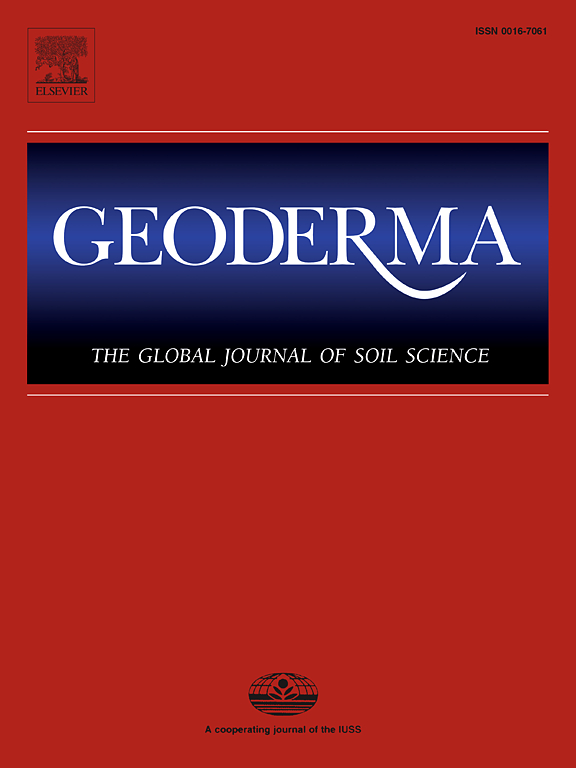Land use intensity differently influences soil communities across a range of arable fields and grasslands
IF 5.6
1区 农林科学
Q1 SOIL SCIENCE
引用次数: 0
Abstract
While there is an emerging body of research showing the consequences of land use intensity on soil biodiversity, most studies focus on biodiversity responses to a single or a limited number of agricultural practices in controlled settings or at a single field site, neglecting that multiple practices are simultaneously applied by farmers in real agroecosystems. The combined effects of various agricultural practices have, until now, been largely overlooked in agroecosystems.
Here, we conducted a field soil sampling campaign on 87 farms with two land use types (39 arable fields and 48 grasslands) to investigate the relationship between land use intensity, determined by various agricultural practices, and multiple soil communities (bacteria, fungi, protists and invertebrates) at regional scales.
We found that land use intensity influenced the diversity and community composition of various soil taxa differently, and these impacts strongly depended on land use type. Soil fungi were most susceptible to land use intensity in both arable fields and grasslands. Specifically, irrigation and pest control were the main practices shaping soil communities in arable fields, while phosphorus and nitrogen fertilization were the main practices structuring soil communities in grasslands. Furthermore, an increase in land use intensity led to greater soil network complexity in arable fields.
Our findings reveal regional on-farm patterns of land use intensity effects on various soil communities and identified key agricultural practices that structure soil communities. A key strength of this study is that these patterns can be generalized because the samples were collected from 87 farmlands where multiple agricultural practices were implemented simultaneously. Overall, this work provides a comprehensive perspective on the different responses of multiple soil communities and their associations to land use intensity in agroecosystems.
求助全文
约1分钟内获得全文
求助全文
来源期刊

Geoderma
农林科学-土壤科学
CiteScore
11.80
自引率
6.60%
发文量
597
审稿时长
58 days
期刊介绍:
Geoderma - the global journal of soil science - welcomes authors, readers and soil research from all parts of the world, encourages worldwide soil studies, and embraces all aspects of soil science and its associated pedagogy. The journal particularly welcomes interdisciplinary work focusing on dynamic soil processes and functions across space and time.
 求助内容:
求助内容: 应助结果提醒方式:
应助结果提醒方式:


